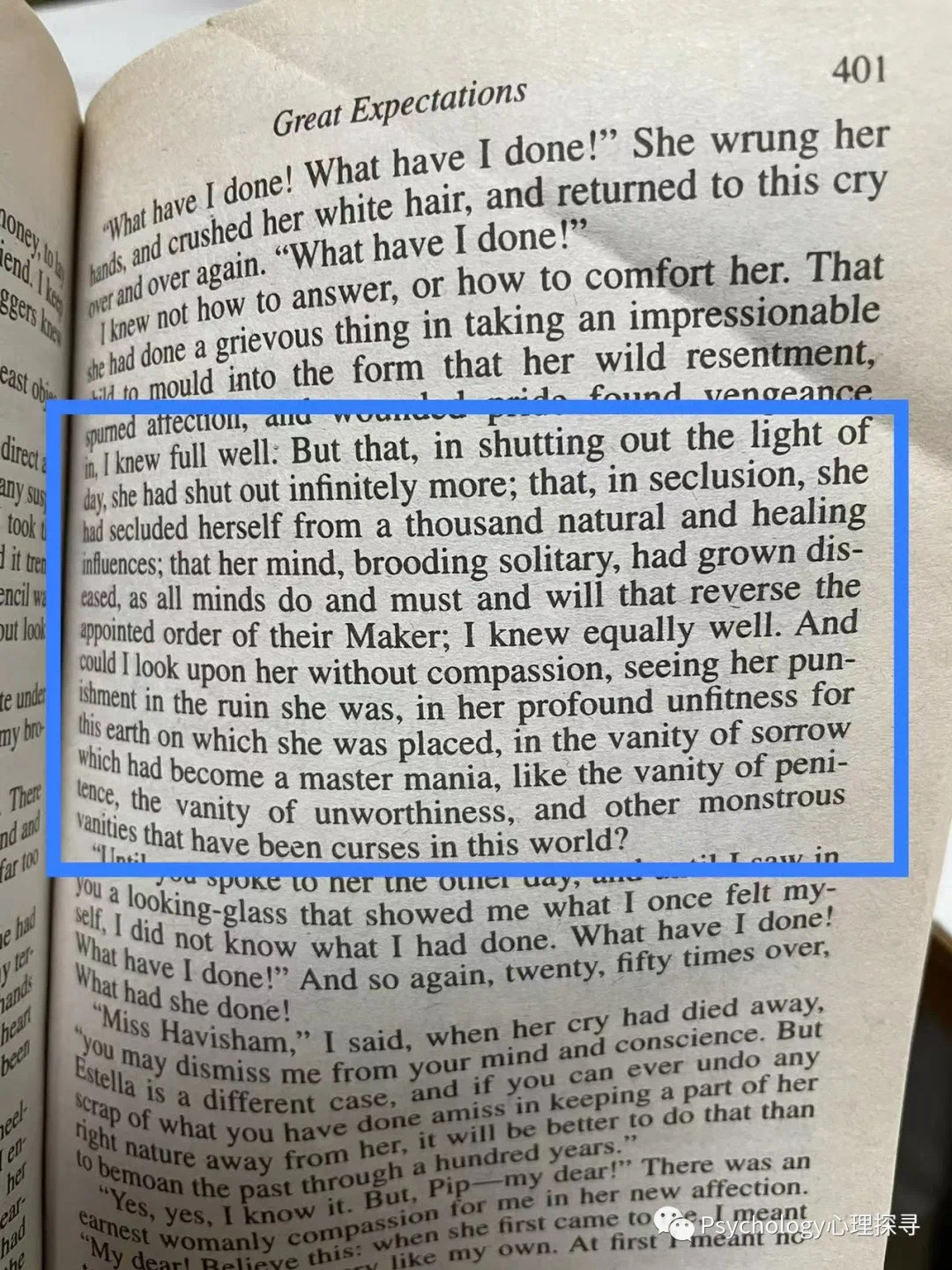心理咨询中的最重要问题/痛苦通常源于对痛苦的回避

KEY POINTS/要点
Clients benefit from gaining new insight into their patterns of thought, emotion, and behavior.
深入洞察个人的想法、情绪和行为模式,能够让患者受益;
New insights in therapy may emerge either abruptly or gradually, over time.
咨询过程中的新洞察发现或是猛然领悟,或是逐渐发生。
Psychological pain often results from attempts at pain avoidance. Therefore, exploring clients' avoidance habits may yield important insights.
心里的痛苦通常源于对痛苦的回避。因此,探究患者的回避习惯,可能会带来重要的发现。
In one recent interview, a journalist asked me about a-ha moments in therapy—those instances in which the client gains new insight about their difficulties and themselves.
在最近的一次采访中,一位记者问到了关于心理治疗中的“啊哈”时刻,即,客户对他们的问题和自身获得新洞察结果的顿悟时刻。
I noted that counter to popular beliefs and movie depictions, a-ha moments are not necessary for progress in therapy. Often, clients know full well what the source of their trouble is and how to fix it; people who ask for advice are rarely clueless about what needs to be done. What they lack is self-confidence, support, and guidance in acting on their knowledge. This is one reason why psychologists often answer a client’s “What should I do?” with "What do you think you should do?”
我的回答中提到,与人们普遍认知和电影描述相反,心理治疗中,要获得进展,并非一定需要这种“啊哈时刻”。通常,客户完全知道他们的问题来源在哪儿,也知道如何解决;寻求建议的人很少不知道需要做什么。但他们缺乏的是自信、支持和采取行动。这也是为什么心理学家通常用“你认为你应该做什么”来回答患者的“我该做什么”的原因之一。
Additionally, when a-ha moments do happen, they mark not the end of the recovery process, but its beginning. In other words, while popular entertainment—and the classic Freudian narrative— depict insight and catharsis as the culmination of the therapeutic journey, in real life this is generally not the case. To yield real change, moments of insight must be followed by arduous work to change old, ingrained habits and establish new, healthy ones. Becoming aware of the solution to your problem does not in itself solve the problem. The solution must be implemented.
另外,当“啊哈时刻”的确发生时,它们并不意味着恢复过程的结束,而是开始。换言之,尽管大众娱乐——和经典的弗洛伊德式说法——将洞察与宣泄是治疗之旅的终点,但在实际生活中却并非如此。想要获得真正的改变,在获得洞察后,需要付出艰辛的努力去改变根深蒂固的习惯、建立健康新习惯。只是知道问题的解决方案,这并能够解决问题。解决方案,必须要得以实施才可以。
Moreover, a-ha experiences often emerge not at once or fully formed but slowly, piecemeal and over time, resembling less the flipping of a switch and more the slow turn of a dial. In other words, a-ha moments are not always moments. New insights sometimes dawn slowly over the course of therapy, as clients gradually recognize, sometimes in retrospect, subtle changes that had occurred over time.
另外,啊哈体验通常并非突然、完全发生,而是缓慢、一点点地、逐步发生的,并不像是按动开关,而更像是缓慢转动一个刻度盘。换言之,“啊哈时刻”并非总是一个个时间节点。新的洞察是心理治疗中随着患者逐渐认识到(有时是在回顾时认识到)随着时间推移已经发生的微妙改变,而缓慢被领悟到的。
To wit: Reflecting on her office behavior over the past few months, a client gradually notices that she is becoming more assertive and hence more effective. That realization leads to another: that her previous beliefs that she’d be rejected if she asserted herself are in effect being refuted, and can be discarded and replaced by more accurate and constructive self-talk.
这里是一个具体案例。在回顾过去几个月她在办公室的行为时,一位患者逐渐注意到她正变的越来越坚定个人立场,因此行为也更具有效性。这一发现也带来了另一个发现:之前她认为如果她坚定个人意见,就会被排斥,但现在她发现这一理念实际上并不正确,可以被抛却,可以代之以更准确和有益的自我谈话内容。
The journalist then asked me what kind of questions tend to elicit a-ha moments or experiences in therapy. I replied that there’s no formula. Any moment—even a moment of silent contemplation--has the potential to yield discovery, regardless of the specific nature of a given question or whether a question had even been posed. Each client's journey is different, and generalizations are risky.
这位记者之后问我在心理咨询中什么样的问题更容易引发“啊哈时刻”和体验。我回答说并没有既定的公式。任何时刻——即使是沉默思考的时刻,都有可能会带来发现,无论被问到的问题是什么性质,或者有没有被问问题。每一位患者的咨询过程都是不同的。一概而论,是危险的。
Moreover, different schools of therapy may rely on different types of questions. For example, cognitive psychologists often use the "So what?" question to probe a client's irrational, catastrophic beliefs (client: "I'm afraid people will dislike my presentation." Therapist: "Let's assume they do: so what?"). The "questioning process" employed by reality therapists poses a set of useful questions: "What do you want? What are you doing (to get what you want)? Is it working? If not, what else can you do?" Solution-focused therapists often use the so-called Miracle question: "If a miracle happened tonight and the problem was solved, what would be the first thing you’d notice that would indicate that a miracle had occurred?” Exception questions, such as "When do you not have the problem?" and "What do you do that is different then?”) are also used in this tradition to identify the client's strengths and coping resources.
另外,不同心理咨询流派可能会采用不同类型的问题。
比如,认知心理医师通常会使用
“那会怎样?”
来探究患者一些不理性、灾难化的理念。
(患者:我害怕他们会不喜欢我的演讲展示。咨询师:假设他们的确不喜欢,那会怎样?)。
现实疗法心理咨询师则会采用一系列有用的问题:
“你想要什么?”“(为了得到你想要的,)你现在在做什么努力?”
“你的努力奏效了吗?”
“如果没奏效,其他还有什么方法?”
而解决方案聚焦型咨询师则通常采用所谓的“奇迹问题”,即,
“如果今晚有奇迹发生,这一问题得以解决,那么你首先会注意到这一问题已经被解决的迹象是什么呢?
另外还会用到“例外问题”来找出患者的优势和应对资源,比如:
“什么时候你不受这一问题的困扰呢?这种时候你的行为跟现在有何不同吗?”
Yet if pressed, I said, I’d suggest that clarifying moments in therapy often happen when we focus on the client’s avoidance habits. Experiential avoidance (EA) may be broadly defined as an “unwillingness to remain in contact with distressing thoughts, feelings, memories, and other private experiences.” In other words, it is an attempt to avoid distress. Recent research and theorizing in psychology have increasingly pointed to the fact that such avoidance is a central feature in many different psychological disorders: Phobias involve avoiding certain places or objects; panic disorder involves avoiding the fear sensations in the body; OCD rituals constitute avoidance of the discomfort brought about by disturbing obsessive thoughts; PTSD involves avoidance of experiences that trigger terrifying traumatic memories; depression involves avoiding attempts to find rewards in an environment that had previously proven non-responsive (aka "learned helplessness"); substance abuse involves an attempt to numb distress, guilt, shame, or physical pain, etc.
我说,但如果你还要继续问,那么我会说在心理咨询过程中的顿悟时刻通常发生在当我们聚焦于患者的回避习惯时。体验回避(EA)可能通常被宽泛定义为“不愿意与痛苦念头、感受、回忆和其他个人体验保持接触。”换言之,这是一种试图回避痛苦的行为。心理学领域最近的研究和理论都逐渐指向这一事实:这种回避是很多不同心理障碍的一个核心特征:各种恐惧障碍都包含回避特定的地点或物体;恐慌障碍包含回避身体的恐惧感;强迫障碍行为是回避因特定具有困扰性的偏执念头而带来的不适感;PTSD则包含回避因创伤经历而触发的体验;抑郁,包含不愿意在之前被证明对他们无回应(漠不关心)的环境中寻找对自己有益之处(即,习得性无助)。物质滥用,则包含试图麻痹痛苦、内疚、羞耻和生理疼痛等感受。
In all these cases, the avoidance habit, presenting itself as an effective short-term solution, proves ineffective and destructive in the long run to the individual’s health and functioning. Psychological distress, in other words, is caused by misguided attempts to avoid psychological distress.
在上述所有情形中,回避习惯看起来像是一种有效的短期解决方案,但长期而言对个体健康和正常机能却无效甚至有害。换言之,心理痛苦(困扰),是由试图回避心理痛苦的错误方法而导致的。
The mechanisms underlying this process hinge on the fact that avoidance is a short-term solution offering immediate relief. Life, however, is long-term, and short-term fixes tend to collapse over time. Specifically, avoidance prevents the development of coping skills and hinders learning and problem solving, since all avoidance teaches you is how to avoid more. It also tends to generalize over time: The more you avoid tolerating discomfort, the more difficult tolerating discomfort becomes.
这一过程的底部机制基于这样一个事实:回避,是提供即时慰藉的短期解决方案。但生活是一个长期的过程,短期的解决办法通常会随着时间推移而失效。具体来说,回避,阻碍了人们培养应对技巧,阻碍了人们学习和解决问题。因为所有的回避都是在教你如何回避更多问题。这通常也会逐渐蔓延:越回避忍受不适感,不适感就变得越难以忍受。
By way of analogy, a habit of avoidance is akin to substance addiction. At first, taking a drink alleviates (lets you avoid) your distress. But over time, drinking becomes your main source of distress.
用比喻来说,回避习惯,就像是物质滥用。最开始,小酌一杯可以缓解(让你回避)痛苦。但逐渐,酗酒成为了你的痛苦的主要来源。
This idea, that avoiding pain now leads to more pain later, is not new. Freudian psychoanalysts note how defense mechanisms, designed to reduce the distress of anxiety, also distort our perceptions of reality; Gestalt theory cites the problem of “contact avoidance,” or an inability to remain aware in the living moment, as the source of psychological suffering; behaviorists have studied how avoidance prevents new learning, and hence behavior change; cognitive theorists have noted how avoidance perpetuates cognitive distortions through the failure to note and consider disconfirming evidence.
回避痛苦会在之后带来更多痛苦,这并非什么新理念。佛洛依德流派心理分析学家们提到了防御机制(人们用防御机制来减少自己的痛苦焦虑感)也会如何扭曲我们对现实的认知;格式塔理论也提及,“接触回避”(无法在当前所处时刻保持清晰觉察状态。这里的接触是指与周围其他人和环境的连接、互动),是心理痛苦的来源。行为主义流派研究了回避如何阻碍学习新事物,从而阻碍行为的改变。认知理论流派则提到了,回避是如何因让人无法注意到并思考反面证据而延续了各种扭曲认知。
Evidence of the destructive power of avoidance can be found in the literature attesting to the therapeutic power of its opposite: exposure. Research has shown that facing one’s fears and processing difficult emotions lead to improved mental health, facilitating the acquisition of coping skills and a sense of psychological empowerment, and refuting inaccurate beliefs. In fact, as I have argued here before, exposure work, which involves in effect countering avoidance, is the most potent weapon in any therapist’s arsenal, and all therapy is in part exposure therapy. Therapy works when the client learns to face, manage, tolerate or change what they had previously learned to avoid.
关于回避的摧毁力量,其证据可以见诸一些证明其相反行为的疗愈功效的文献。回避的相反行为,是:面对。研究显示,面对自身恐惧、处理棘手情绪,会提升精神健康,促进应对机能的习得,促发一种心理赋能感,并能够驳斥一些并不客观的信念。实际上,正如我之前所说,暴露疗法是任何心理咨询师的最有力武器,而且所有疗法实际上都在一定程度上是暴露疗法。暴露疗法实质上就包含了应对“回避”。当患者学着去面对、管理、忍受或改变他们之前会回避的东西时,疗法才会奏效。
A complication here is that avoidance often does not appear as such but operates under various guises. In fact, avoidance often masquerades as action. People often will continue performing a destructive habit because they fear that not doing so will result in greater destruction. A client continues to speak nonstop to avoid the self-reflection offered by silence—which they find scary. A client's continuous labor at people-pleasing is an attempt to avoid the distress of potential rejection, which they perceive as unbearable. People with chronic worry often fret incessantly about impending catastrophes, believing that such worry constitutes action when in fact, such worry hinders their ability to take problem-solving action. Worrying is avoidance masquerading as action.
但这里有个复杂因素是,回避通常并不那么明显,而是戴着各种伪装。实际上,回避,通常会伪装成“行动”。人们通常会继续采取某种具有破坏力的习惯,因为他们害怕如果不这样做,会带来更大的破坏。患者继续无休止地滔滔不绝,用来回避沉默可能带来的自我反思——这对他们而言是可怕的。患者继续努力取悦他人,是用来回避潜在的被拒绝所带来的痛苦,这对他们而言是难以忍受的。始终处于担忧状态的人通常总是在担心即将发生的灾难,觉得这种担忧也是一种行动措施,而实际上,这种担忧只是阻碍了他们采取行动解决问题。担忧,是伪装成“行动”的回避行为。
The cunning of avoidance is one reason why many clients are unaware that their pain is being caused by their attempts to avoid pain. Thus, the questions that are most likely to facilitate the a-ha process in therapy will often aim to illuminate this truth. Once we identify the destructive, painful, or ineffective behavior pattern the client wants to change, the most useful question is some version of: “What does this current behavior allow you to avoid?”
很多客户并不知道他们目前的痛苦正是源于他们对痛苦的回避,其中原因之一,正是回避的这种狡猾性。因此,在心理治疗中最可能催生“啊哈时刻”的问题通常致力于揭露这一真相。一旦我们找到了患者想要改变的这种具有破坏力的、痛苦的或无效的行为模式,那么最有效的问题都会类似于:你当前的行为让你能够回避什么?
In discovering what a dysfunctional habit lets us avoid, we discover what we need to face in order to heal.
找出了我们通过某种不良习惯而回避的内容,我们就找出了为了让我们痊愈而需要面对的问题。
